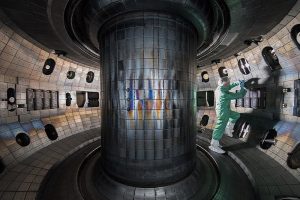When the term “renewable energy” comes up in conversation, we immediately think of methods like solar and hydropower. However, these modes of energy production come with pros and cons. For example, hydropower is not feasible in areas without access to moving or falling water and solar energy only works when there is available sunlight. However, one method that is up-and-coming to produce renewable energy is fusion reaction, which has the potential to be extremely versatile.
what is fusion energy?
To fully graph the idea of fusion energy, we have to understand the concept of nuclear fusion. At the most rudimentary level, nuclear fusion is the process of merging two small atomic elements together. In this process, the merging of the two atomic elements releases energy that can be harnessed. However, the actual physics and mathematics are more complicated than previously explained.
For a more concise look into nuclear fusion, refer to the following video:
The main advantages of fusion energy are that it produces little to no greenhouse gasses. The disadvantage of the fusion reaction is that currently, the energy input exceeds the energy output and there is the production of small amounts of radioactive waste.
what is the future of nuclear fusion looking like?
As of February 9th, 2022, engineers at the UK Atomic Energy Authority’s Joint European Torus (JET) facility in Oxford produced 59 megajoules of sustained fusion energy, which breaks the previous record of 22 megajoules set in 1997. This reaction lasted for five seconds before breaking down. However, the energy input to start the reaction exceeded the amount of energy produced. Nonetheless, this experiment displayed that the fusion reaction can be sustained for a good amount of time and is a great stepping stone for a future experiment set in 2026 called ITER.

A Look into Fusion Reactor – Image from Wikipedia
what is iter?
ITER is a nuclear fusion plant currently being built in southern France and is set to begin experiments in 2025. The goal of ITER is to produce 500 megawatts of energy in 400-second intervals. For some context, if this facility was to use one ton of deuterium, one of the two small elements used for fusion reaction, that would be the equivalent of using 29 billion tons of coal to produce energy. If experimentation is a success, then there is a great possibility for a further transition away from fossil fuel usage.

ITER fusion reactor – Image from ITER
overall takeaways
From recent news, there is potential for fusion energy to be a mainstream source of renewable energy. There is optimism that ITER will be a success from the JET experiment. However, ITER experimentation begins in 2025 and results can differ from what is predicted. For now, we will still have to rely on current methods of renewable energy production.
– Jimmy Huang

2 responses to “Breakthrough in Fusion Energy”